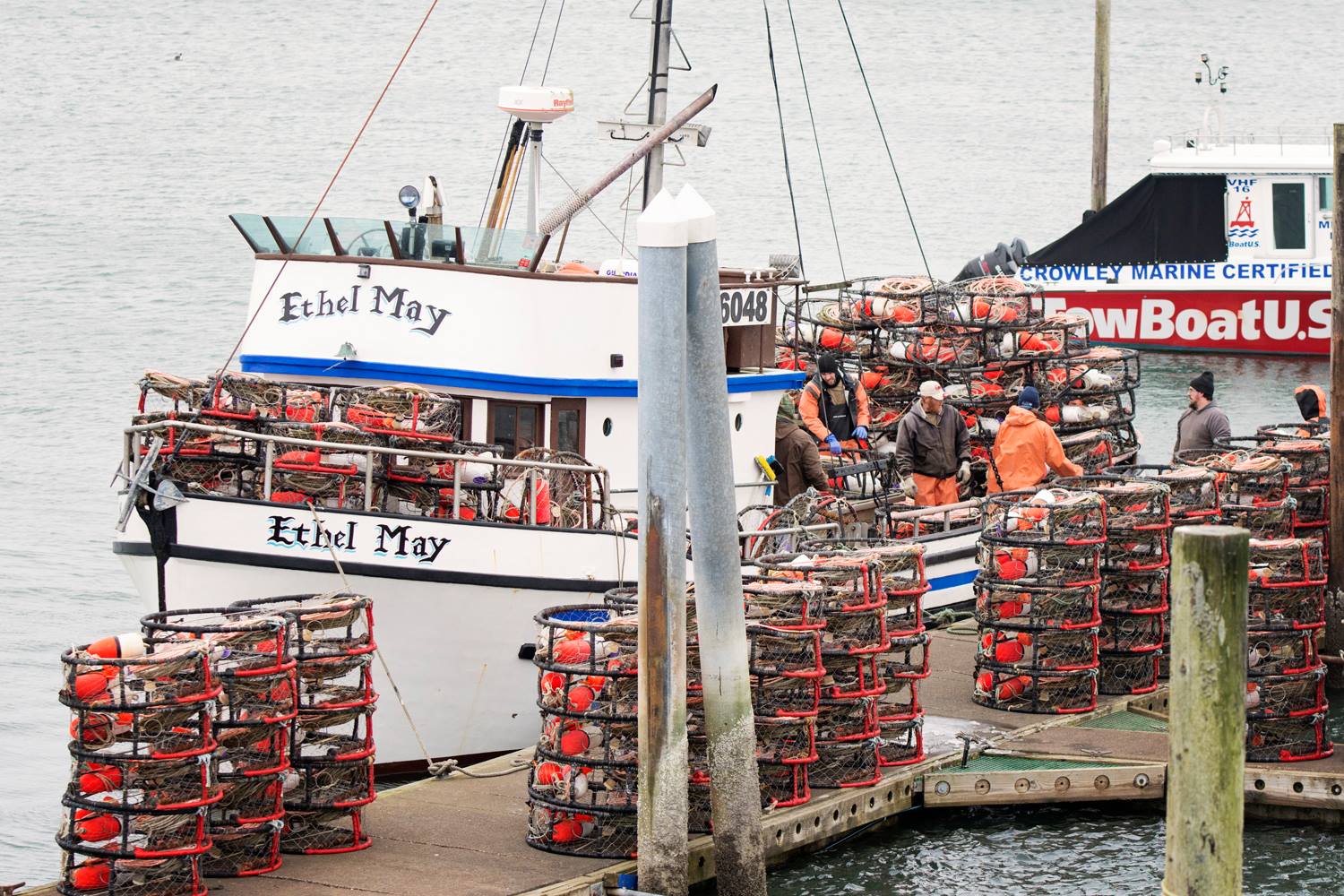After a historic 11-day strike, Dungeness crab fishermen on the Pacific Coast struck a deal on Jan. 6 and started running gear as soon as storms subsided. Fishermen and processors in Oregon — including Pacific Seafood and Trident Seafoods — had agreed to a starting price of $3 a pound in early December. (Oregon is the only West Coast state where fisherman and buyers negotiate prices through state mediators.)
After a deal was struck on Jan. 6, crabbers loaded their gear in Westport, Wash., and were ready to get back to work. WEFish photo.But just before Christmas processors announced they would start buying crab at $2.75 per pound for fishermen in southern Oregon and northern California, triggering the strike. Normally, a strike over the price is a localized affair, but this year the entire coast — from California to Washington — stayed tied up.
“In 35 years I’ve never seen the entire coast tie up,” says Larry Collins, president of the San Francisco Community Fishing Association. “Things are different than they used to be. It’s not just fishing anymore; our margins are small, we need to look at this as a business.”
The original price agreement in Oregon came after the season was again delayed, for all but the southern the coast, because of high levels of the neurotoxin domoic acid. This was the second year in a row domoic acid led to delays. Then days before fishermen were set to start hauling gear in north of Port Orford, Ore., and the southernmost section of Washington on Jan. 1, fishermen went on strike.
Fishermen and Pacific Seafood agreed to a price of $2.875 at a meeting facilitated by the Oregon Department of Agriculture on Jan. 6. The half cent, while seemingly trivial, was hard fought, says Oregon Dungeness Crab Commission Executive Director Hugh Link.
While the deal was struck in Oregon, and where it is only legally recognized, it will affect all three states.
“Crab was moving real well, the market was real strong,” says Collins from California, where crabbers started on Nov. 15. “If fishermen don’t hang together, then they find the lowest common denominator. I was encouraged to see the unity in the strike.”







